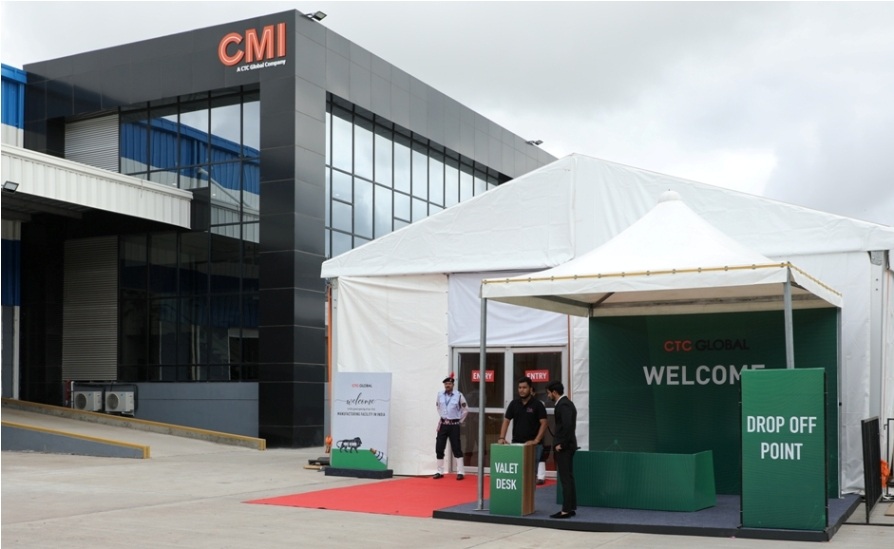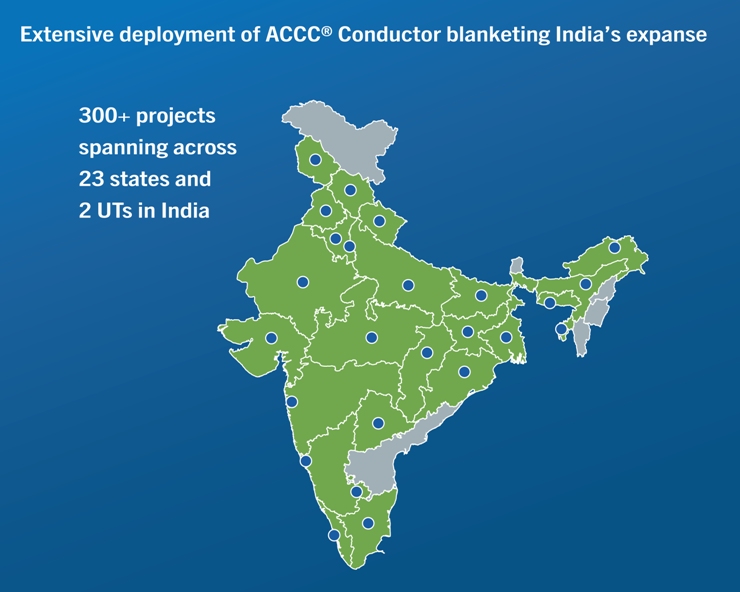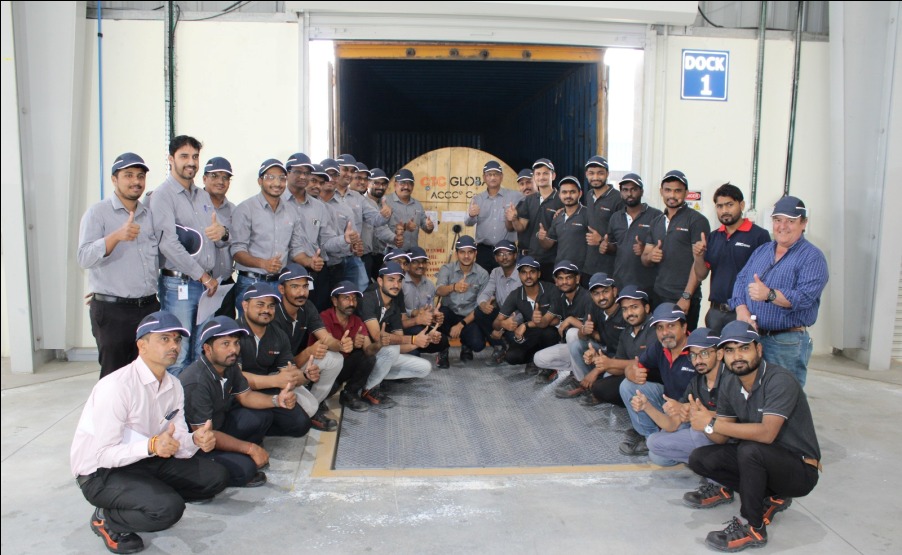US-based CTC Global Corporation has developed and owns the rights to the highly efficient ACCC® Conductor. In a very significant development, CTC Global very recently opened its first manufacturing facility in India, located at Pune in Maharashtra, bringing it closer to a growing market that it has been serving for over ten years. T&D India met up with Anne McDowell, Vice President – Commercial Operations & Marketing, CTC Global, at the company’s formal plant inauguration ceremony. In this exclusive interview, Anne McDowell takes us through the company’s exciting journey in India. She exudes confidence in the high business potential of the Indian market, and believes that India will continue to be an important part of CTC Global’s worldwide business. An interview by Venugopal Pillai.

It is nice to know that CTC Global now has a local manufacturing plant in an important market like India. When did you seriously start considering the Indian facility?
We began discussing the idea of opening a manufacturing facility in India about six years ago. It took us time to develop a strategy and work on the planning. Also, in the meantime, we opened a facility in Paraguay. So we had to wait until we could open the plant in India, but we knew many years ago that at some point, we would definitely want to have a local facility as the Indian market was developing fast and we always wanted to be as close to customers as possible.
What has been CTC Global’s business volume in India so far?
We have so far supplied over 25,000 km of ACCC® Conductor to over 300 projects spread across 23 states and 2 Union territories in India.
We also note with appreciation that ACCC® Conductor has been used for the first time in India in a tariff-based competitive bidding (TBCB) project. Tell us more.
Yes, the 400kV Khargar-Vikroli line built by Adani Energy Solutions Ltd is the first TBCB project where ACCC® Conductor has been installed. The project comprised approximately 74 ckm of 400kV and 220kV transmission lines, and pile foundations in creek areas. According to Adani Energy Solutions, this project is critical to the city of Mumbai as the existing capacity of transmission corridor is not sufficient to carry further power into the Mumbai city. This project would enable additional power to be brought into Mumbai and would thus help in meeting the future demand of the city.

What is the indicative capacity of the Indian plant and how does it compare with say those in Indonesia and Paraguay?
Right now, it is a little bigger than Paraguay but smaller than all the others. When it is fully expanded, it will be the second-largest after the US.
We understand that CTC Global currently has sufficient stranding partners in India. Are there plans of adding more?
Adding more stranding partners depends on regional needs and at this moment, Sterlite Power, JSK Industries, and Apar Industries – have adequate stranding capacity to serve the Indian market. Incidentally, Sterlite, Apar and now JSK, are investing in expanding their conductor-manufacturing capacities considering Indian power sector’s robust growth potential. So, at the moment, there is enough capacity to cover the Indian market.
When it comes to actual marketing of CTC Global’s ACCC® Conductor, does CTC Global do it or is it the stranding partners?
It is both. We go out and talk to customers directly to help them understand the technology and the associated benefits. In India, we have had strong partnerships with our authorized manufacturing partners (AMPs) – who also talk to utility customers about the advantages of ACCC® Conductors. If our stranding partners need some deep technical support, whilst marketing the ACCC® Conductors, we join our partners in customer discussions.
 Up to which voltage (kV) class are ACCC® conductors currently catering to worldwide?
Up to which voltage (kV) class are ACCC® conductors currently catering to worldwide?
For the most part, we have focused on the transmission and sub-transmission markets, in the 33kV to 400kV range, but we have done a number of projects ranging from 11kV (AC) to 1,100kV (DC).
Deployment of advanced technologies like ACCC® Conductor would not be easy for most state government utilities that are financially weak. What is your view?
In the past, we had this experience – not with the transmission utilities but more with the distribution companies (discoms). My understanding now is that the Central government has started taking steps to improve the financial health of discoms. So, our hope is that now they can take advantage of newer technologies like the ACCC® Conductor.
In fact, we already have projects with 23 states and 2 Union territories in India. So, we are dealing with several government utilities – presently more on the transmission side than the distribution side.
Would the new Indian facility cater purely to the local market, or do you also intend to use it as an export hub? On the same lines, what is typically the situation with the other plants of CTC Global?
Our facilities worldwide primarily serve the local market, and that will be the case with the Indian plant as well. However, we might also use this for other markets. For instance, our Indonesian plant was meant to serve the local market there. But when we had available capacity, we used the plant in Indonesia to cater to other markets like India and other parts of Southeast Asia.
CTC’s view is that the Indian market can absorb all that we can make at the facility in India! But you never know, in the future, we might use the Indian plant for exports.

CTC Global is serving 300+ utilities worldwide. Are there any countries/regions, yet untapped, that represent high-growth areas of ACCC® Conductor?
We see big untapped potential in the US itself! Because, in the past, the US always had a power grid that generally worked. But now, with the energy transition, things are changing. If you look at recent numbers, energy demand in the US is generally going up. This is where we want to contribute. In simple terms, if you have extra capacity in your transmission system, it gives you the opportunity to “flex” during the times of higher power demand.
Coming back to the India plant, we understand that it is branded “CMI”.
Yes, the legal entity operating in India will be “CMI,” which is a wholly-owned subsidiary of CTC Global.
When will commercial production start from the Indian plant?
Production has already started, and we have even made our first delivery!
How do you see the years ahead for CTC Global in India?
I think the Indian market has a lot of potential. We expect that CMI will be a very busy plant, very quickly! India and the South Asia region is a very important part of our global business. We therefore see CMI playing a big role.


